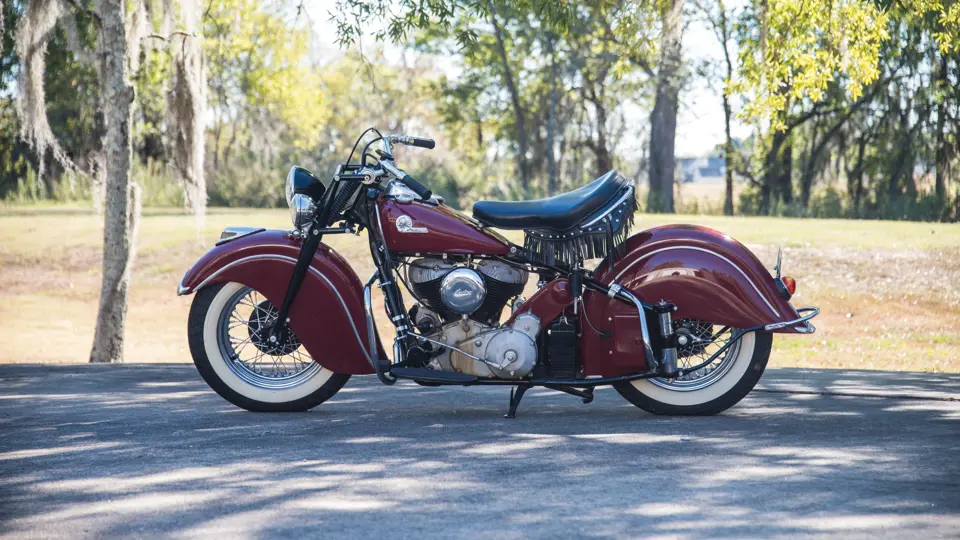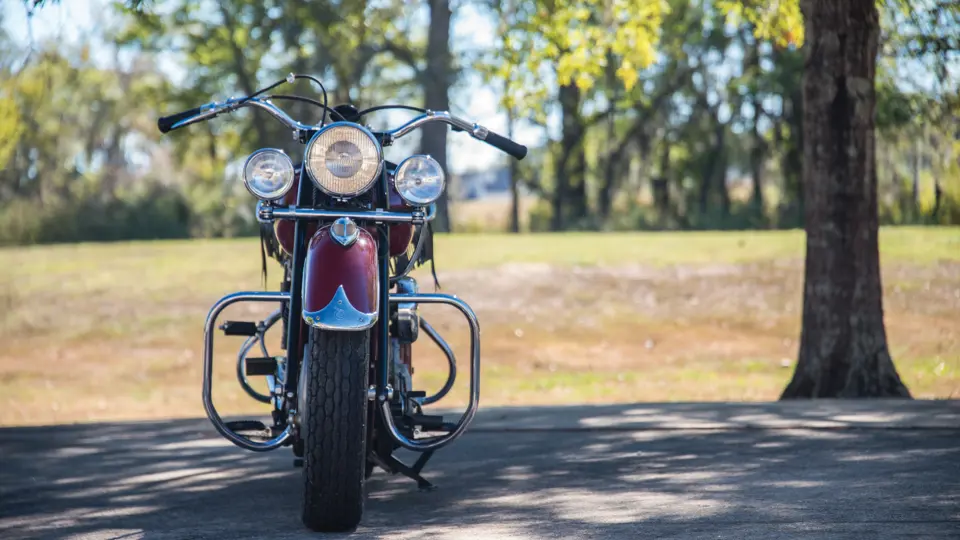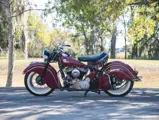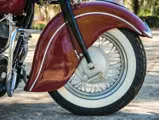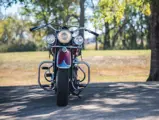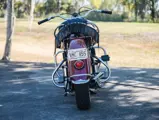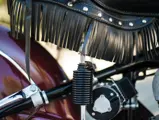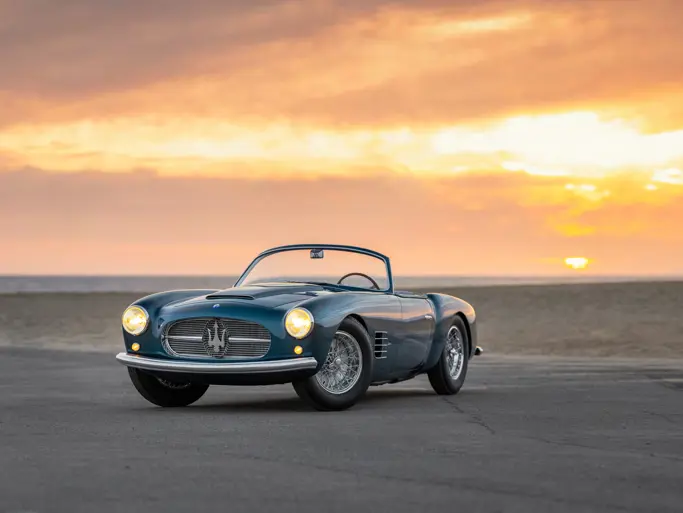Model 346. Est. 40 hp, 74 cu. in. air-cooled side-valve V-twin engine, three-speed manual transmission, girder front forks, plunger-type rear suspension, and two-wheel drum brakes. Wheelbase: 60.5 in.
The 1940 model year was significant in the history of Indian motorcycles, with the addition of skirted front and rear fenders on all of its models, a feature that remains emblematic of the Indian line today. Mechanically, the Chief and Four models also received a new frame with an innovative dual plunger-type rear suspension as opposed to the decidedly low-tech unsprung rear wheels and large, low-pressure tires relied upon by Harley-Davidson. Based upon a remarkably solid large-tube frame, the updated Indian models continued to build on the marque’s well-deserved reputation for smoothness and excellent handling.
Following the end of World War II hostilities, the Indian model line consisted solely of the V-twin Chief, in order to meet the pent-up demand for new motorcycles, as well as to conserve funds for the development of a new model line. In 1945, under a change of ownership led by Ralph Rogers, Indian was purchased from DuPont and they began development on a new line of motorcycles patterned after the popular British singles. Unfortunately, in 1948, the historic Springfield, Massachusetts, factory—affectionately known as the “Wigwam”—was closed in favor of a new facility.
The 1946 Indian Chief presented here is finished in a beautiful deep maroon color and accented by tasteful chrome trim along the front and rear fenders. The Chief was acquired by the current owner in 1984 who then completed a comprehensive restoration. The motorcycle was finished in 1986 and then presented at several AACA meets, where it won its First Junior, Senior, and Grand National awards. Remaining in his private ownership for over 30 years, this exceptional American motorcycle continues to present well with only 170 miles showing on its odometer. The Chief includes a pair of chrome plated driving lights, a distinctive fringed saddle, as well as an abundance of bright trim and a pair of period-style whitewall tires.
Reported by the current owner to ride as well as it looks, this Indian Chief Roadmaster continues to exemplify the classic American V-twin motorcycle.




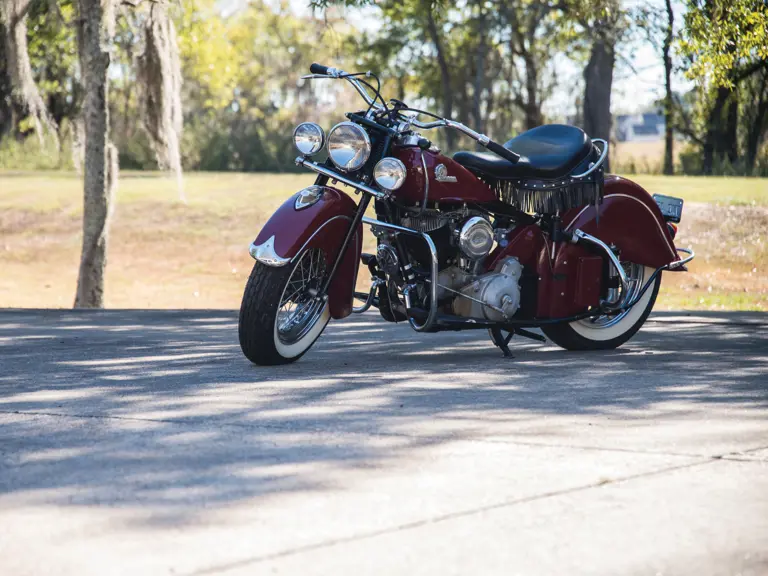
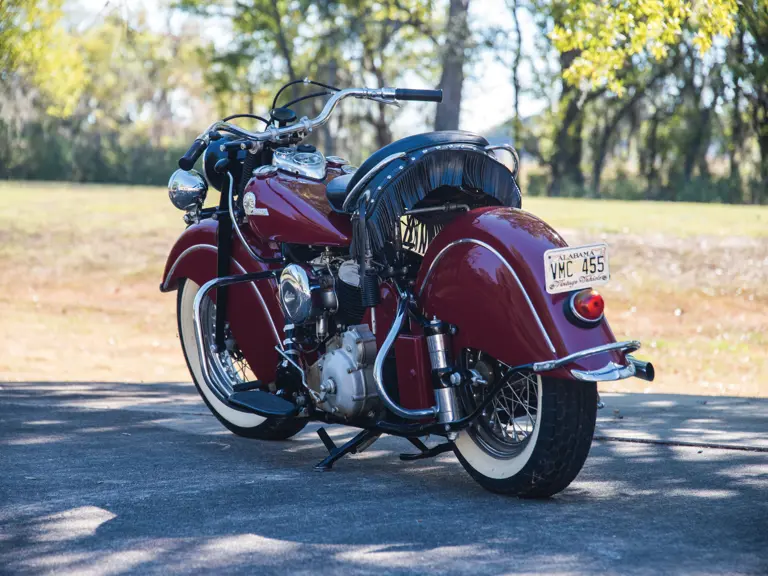
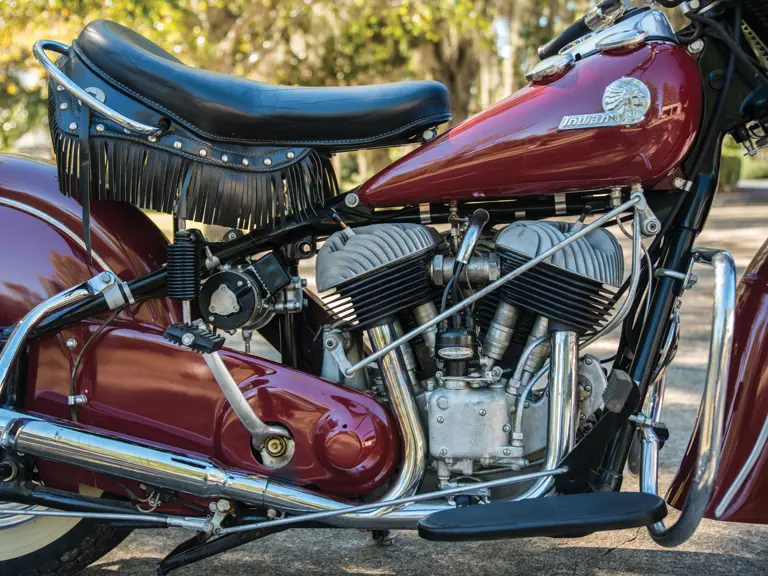
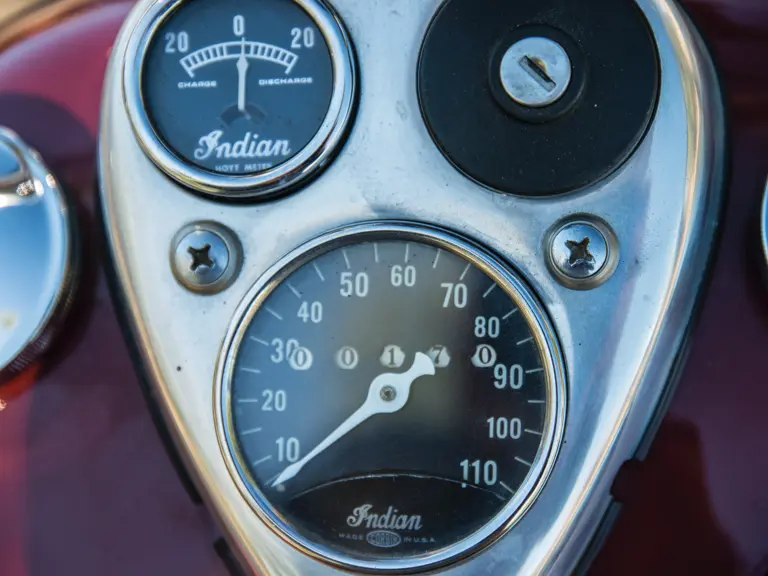

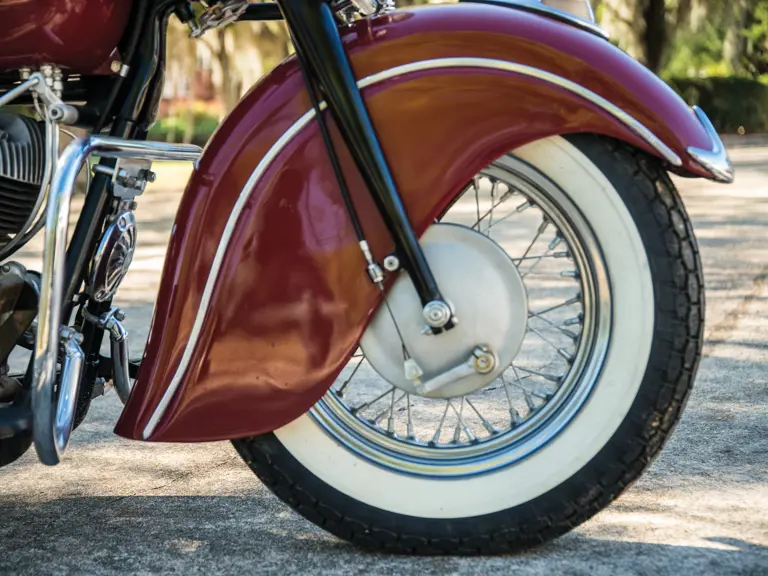
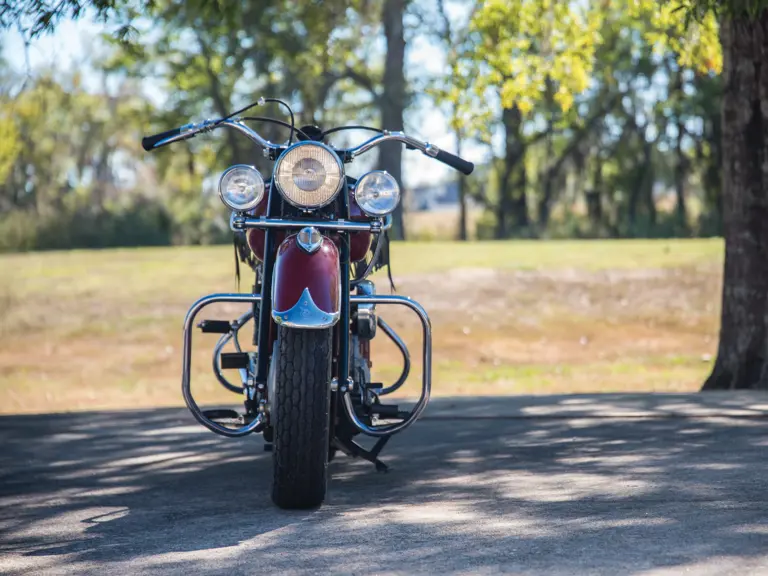
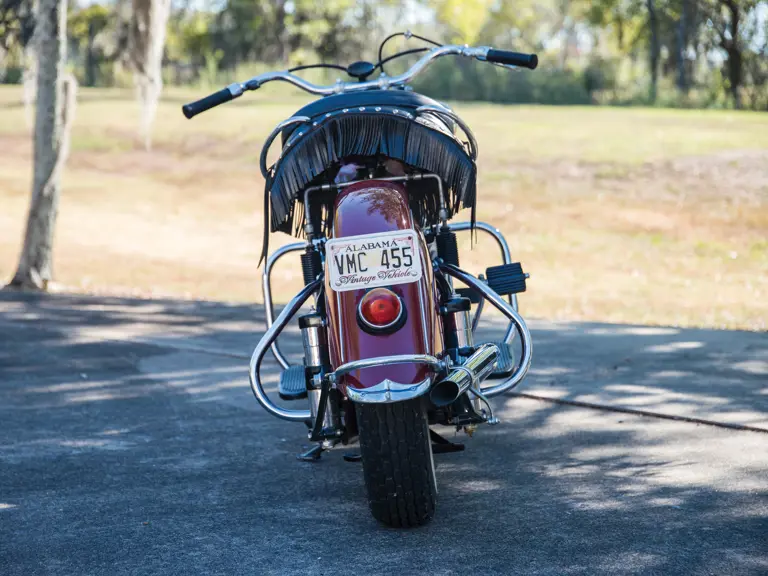
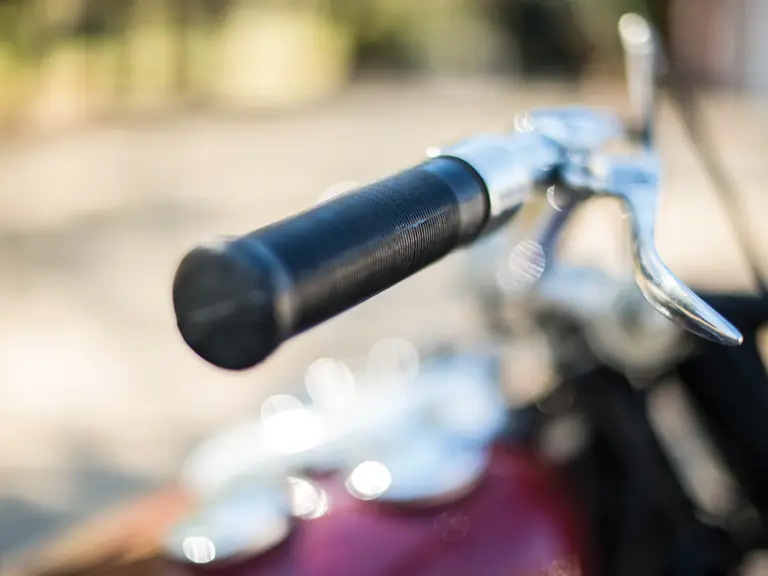

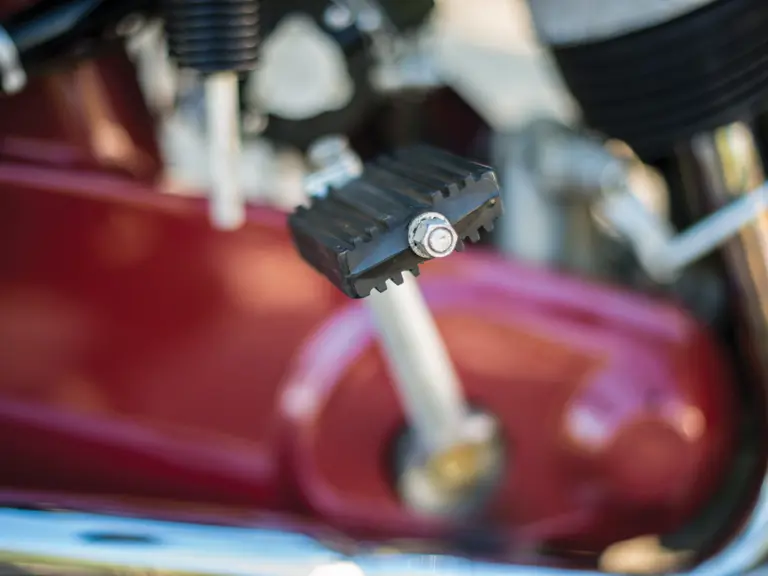
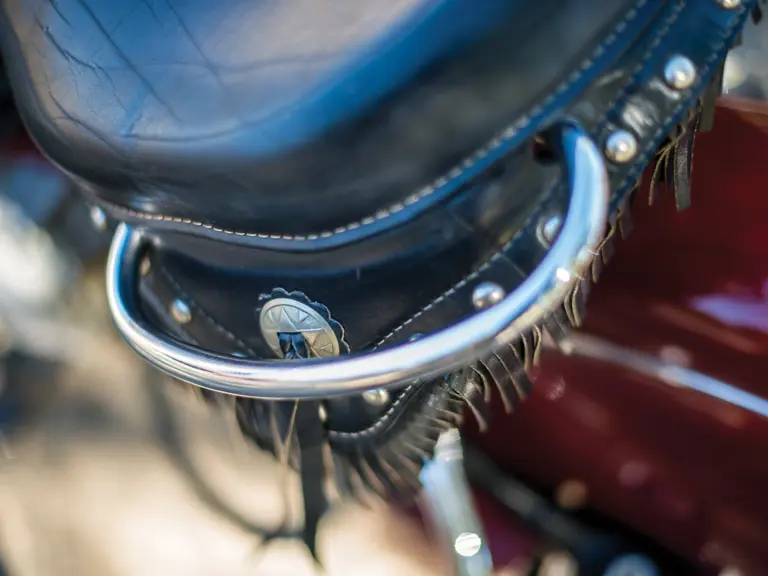
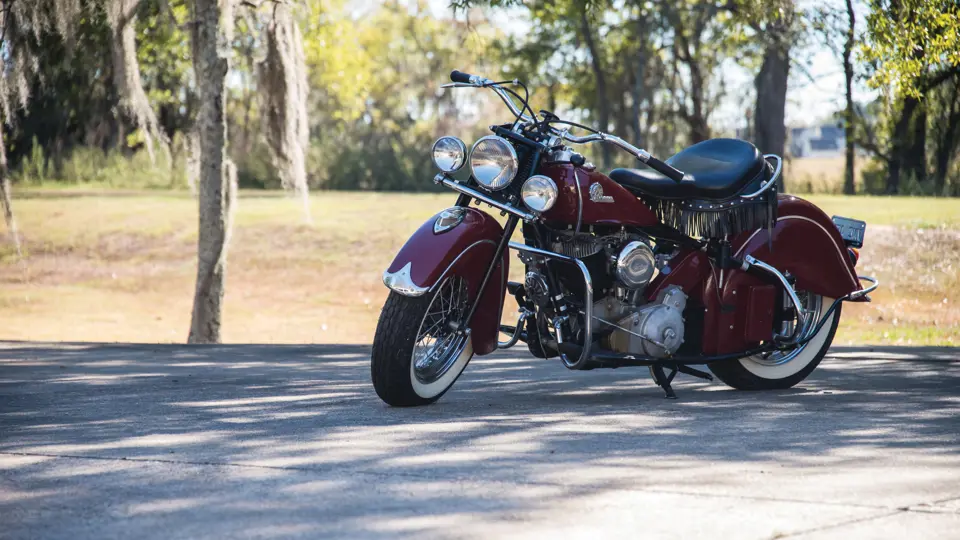
 | Phoenix, Arizona
| Phoenix, Arizona
